Abundance: uncommon
What: berries
How: raw, cooked, jam/jelly, maybe wine
Where: woods
When: fall, winter
Nutritional Value: antioxidants, some carbohydrates
Dangers: none, but do not mistake for toxic Chinese privet.
Ripe farkleberries. They remain edible even when shriveled into raisin-like appearance.

Close-up of farkleberries.
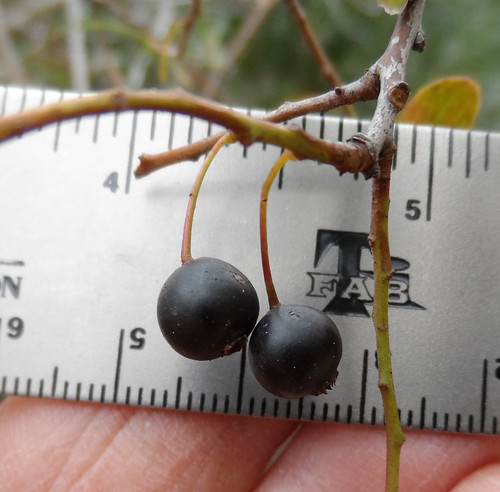
Dried farkleberries.
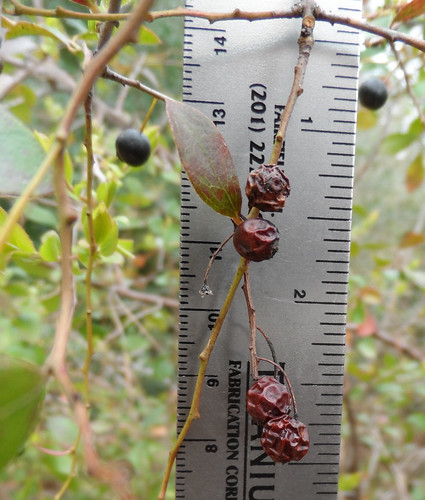
Smashed fruit. Farkleberries have very small seeds compared to many other viburnum fruit.
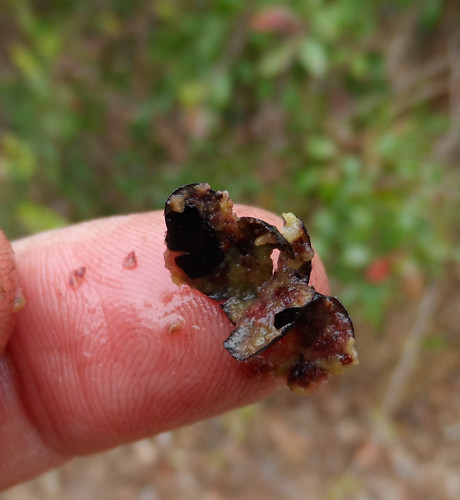
Close-up of Farkleberry flowers.
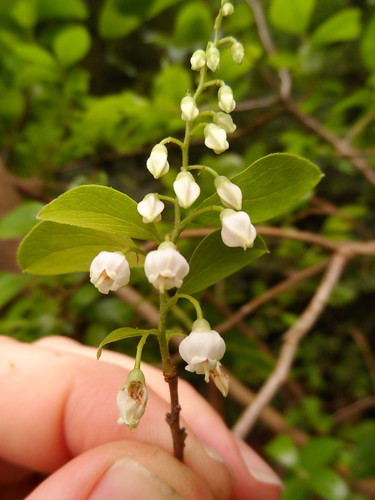
Unripe farkleberries (late August, Big Thicket State Park).
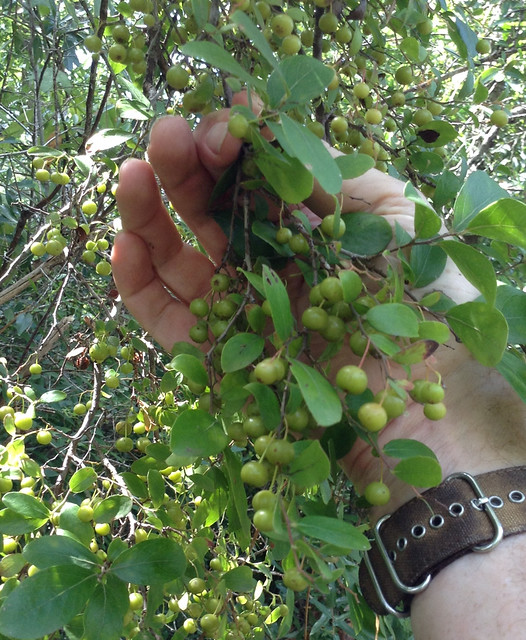
Farkleberry leaves. Note the alternating opposite arrangement. The leaves turn red in the winter and usually drop off though many leaves will still be attached when new leaves are budding.
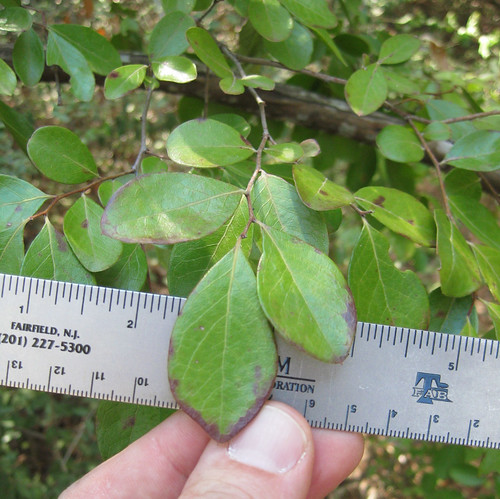
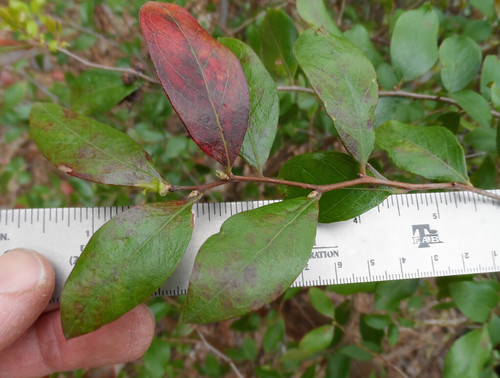
Farkleberry trunk. Note the "brick-like" pattern of the bark.

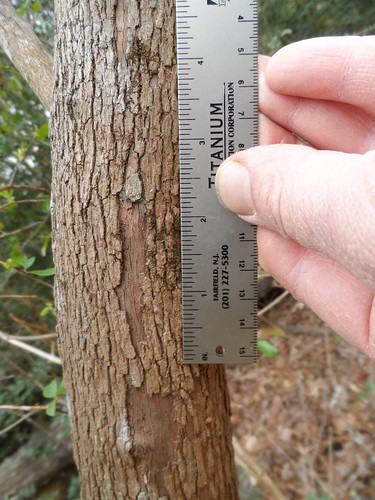
Young farkleberry branches have a reddish color but lack the brick-like bark pattern.
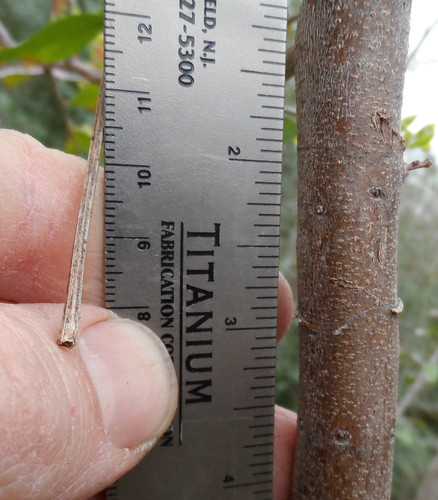
Texas distribution, attributed to U. S. Department of Agriculture. The marked counties are guidelines only. Plants may appear in other counties, especially if used in landscaping.
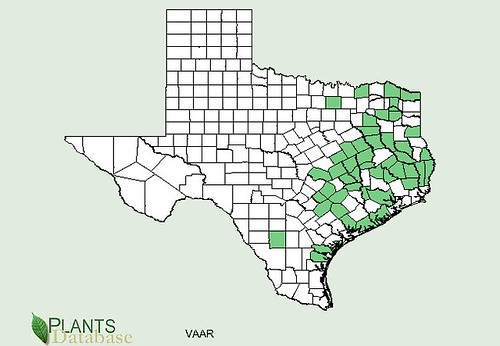
North American distribution, attributed to U. S. Department of Agriculture.
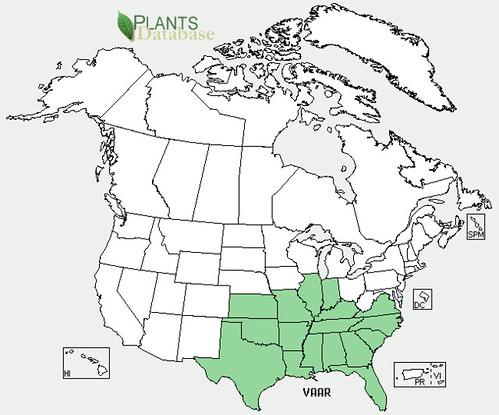
Filling the spaces between bigger trees in gulf coast and east Texas woods, the small, understory Farkleberry trees play a vital role in keeping woodland creatures fed...including foragers! Their distinctive bark, looking like orange/brown brickwork makes it an easy plant to identify even when neither flowers or fruit are present. Novice foragers often mistake the Farkleberry for Yaupon holly (Ilex vomitoria) based on their similar leaves. While both grow their leaves in a zig-zag pattern, the edges of Farkleberry leaves are smooth while Yaupon holly leaf edges are bumpy. Another close relative, Rusty Blackhaw (Viburnum rufidulum), has similar bark and leaves but football-shaped fruit containing one big seed.
Farkleberries are ripe when black which happens in the fall and will remain on the tree and edible well into winter even when somewhat dried and wrinkled. They make a sweet snack, though somewhat small and seedy.
Buy my book! Outdoor Adventure Guides Foraging covers 70 of North America's tastiest and easy to find wild edibles shown with the same big pictures as here on the Foraging Texas website.

